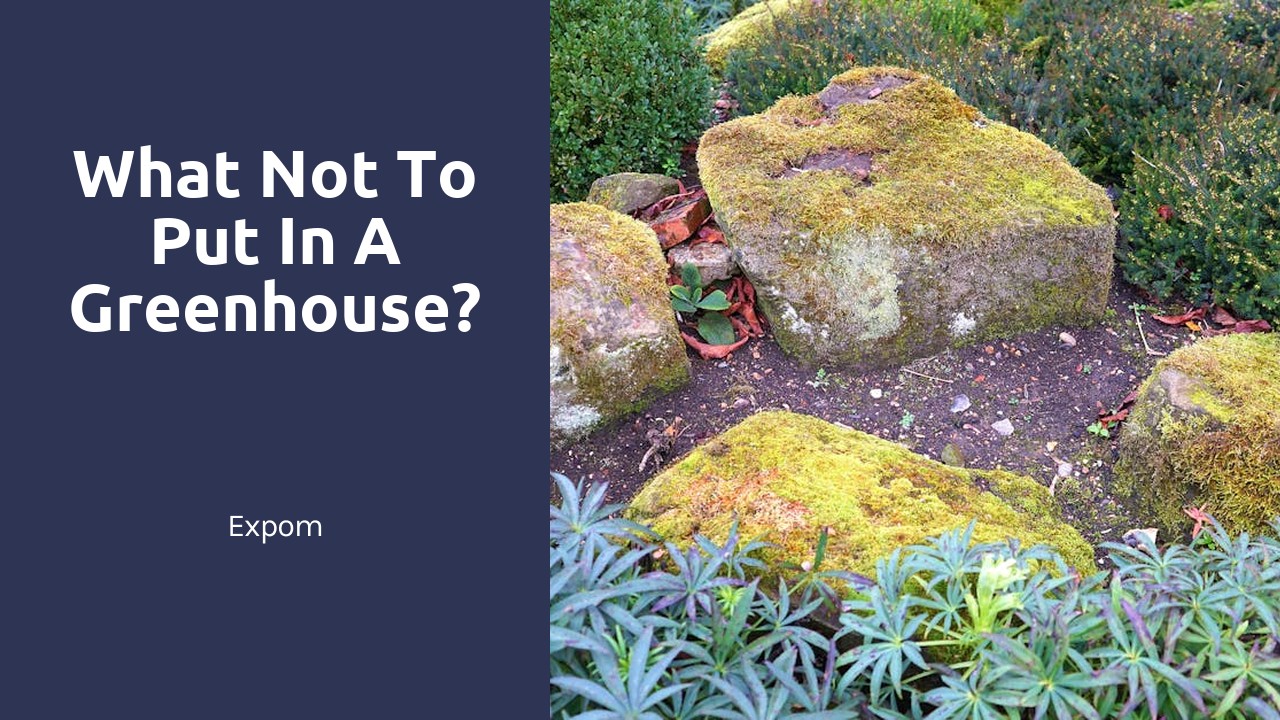What not to put in a greenhouse?

Large Animals
Large animals have no place in a greenhouse, regardless of how spacious it may seem. This applies to both pets and livestock. Plant selection in Clarington should be guided by this principle, ensuring that animals are not brought inside. Not only can animals damage delicate plants through direct contact, but their waste can introduce harmful bacteria and parasites into the environment. Proper care and attention to detail are essential in greenhouse maintenance, and the presence of large animals can disrupt this delicate balance. Furthermore, the confined space of a greenhouse is not conducive to the needs of most animals, causing them undue stress and discomfort. It is best to keep them out of this controlled environment for the well-being of both plants and animals alike.
Pets and Livestock
Pets and livestock should be kept out of greenhouses to maintain a suitable environment for plants. The presence of animals can lead to damage to the plants and soil, as well as potential contamination risks. Plant selection in Cambridge may be impacted by the introduction of pets and livestock, as their presence can disrupt the carefully controlled conditions necessary for successful growth.
Furthermore, pets and livestock can pose a safety hazard in a greenhouse setting. Animals may knock over pots, trample delicate plants, or create obstacles that impede proper care and maintenance. Considering plant selection in Cambridge, it is crucial to create a space where plants can thrive without the potential risks associated with having pets and livestock present.
Excessive Water
When it comes to maintaining a greenhouse, excessive water can be a major concern for plant health. In the region of Ajax, proper plant selection is crucial to ensure that your greenhouse does not have issues with overwatering. Overwatering can lead to root rot and poor drainage, ultimately harming the plants within the greenhouse.
Overcrowding plants in a greenhouse can exacerbate the issues related to excessive water. In Ajax, where plant selection is essential for greenhouse management, having too many plant varieties in a confined space can make it challenging to regulate the water needs of each plant adequately. Poor drainage caused by overcrowding can result in water pooling around roots, creating an environment ripe for disease and pests to thrive.
Overwatering and Poor Drainage
Overwatering and poor drainage can pose significant challenges for greenhouse plants. It is essential to strike a delicate balance when it comes to watering your plants. Overwatering can lead to root rot and other fungal diseases, ultimately causing plant decline or death. Proper drainage is key to preventing waterlogged soil which can suffocate root systems. In the climate of Greater Sudbury, where precipitation levels can vary, ensuring that excess water can flow easily away from the plant roots is vital for their health and longevity. It is advisable to monitor soil moisture levels regularly, especially during rainy seasons, to avoid the pitfalls associated with overwatering. Implementing a suitable drainage system tailored to the specific needs of your plant selection in Greater Sudbury can help prevent water stagnation and maintain optimal growing conditions for your greenhouse plants.
Overcrowding
Overcrowding is a common mistake that many greenhouse enthusiasts make when it comes to growing plants. Plant Selection in Waterloo should be done carefully to ensure that each variety has enough space to thrive. When plants are packed in too tightly, they compete for resources like sunlight, water, and nutrients, which can lead to stunted growth and poor overall health. It's essential to give each plant the space it needs to spread out and develop properly.
Furthermore, overcrowding can create a breeding ground for pests and diseases. When plants are cramped together, it becomes harder to spot early signs of infestations or infections. Proper spacing between plants allows for better airflow, reducing humidity levels and minimizing the risk of mould and mildew. By avoiding overcrowding in your greenhouse, you can promote better plant health and make it easier to monitor and maintain your garden.
Too Many Plant Varieties
Plant selection in Oshawa is a key consideration when planning the plant varieties to include in your greenhouse. It can be tempting to want to grow a wide range of plants, but overcrowding your greenhouse with too many varieties can hinder the growth and health of your plants. When there are too many different types of plants in close quarters, they may compete for resources such as sunlight, water, and nutrients.
Having a diverse collection of plant varieties in your greenhouse can make it challenging to cater to the specific needs of each plant. Different plants have varying requirements for light, water, humidity, and temperature. When you have too many plant varieties, it can be difficult to create the optimal growing conditions for each plant, leading to stunted growth, disease susceptibility, or even death. Therefore, it is crucial to carefully consider the compatibility of plant varieties and their individual needs when selecting which plants to cultivate in your greenhouse.
FAQS
Can I keep large animals in my greenhouse?
No, it is not recommended to keep large animals in a greenhouse as they can damage the structure and plants.
Is it okay to have pets and livestock in a greenhouse?
It is best to avoid keeping pets and livestock in a greenhouse as their presence can introduce pests and diseases to the plants.
How much water is too much for a greenhouse?
Excessive water in a greenhouse can lead to overwatering and poor drainage, which can harm the plants.
What are the risks of overwatering in a greenhouse?
Overwatering in a greenhouse can cause root rot, fungal diseases, and nutrient deficiencies in plants.
Is it okay to overcrowd a greenhouse with too many plant varieties?
Overcrowding a greenhouse with too many plant varieties can lead to competition for resources, increased pest and disease pressure, and hinder proper growth and development of the plants. It is best to avoid overcrowding and choose a few varieties that thrive in the greenhouse environment.